Ed left Latvia broken-hearted. He wandered for many years and eventually made his way to Canada and then down into California and Texas. He worked in lumber camps and cattle drives. During his wanderings, Ed developed tuberculosis. He was told by a friend that Southern Florida had a good climate for a possible cure for the disease.
Ed arrived in Southern Florida sometime during the 1918-1920 periods. He first started building the castle, a monument to his lost love, in Florida City. He used simple tools to excavate, carve and move tons of coral rock.
Ed was a private person and built the castle at night and when those around him began to spy upon him and a subdivision was planned to be built near him, he decided to move his castle 10 miles south. He hired a friend and his trailer to help move the castle, stone by stone down the old Dixie Highway. No one ever saw Ed loading or unloading the trailer because he did this by lantern light at night.
When Ed relocated his castle to Homestead, he continued further construction on it. He cut coral from a quarry next to the castle.
Around 1940 Ed finished erecting the walls (the largest weighing 29 tons) of his coral castle. The gates to the castle were locked at all times but Ed would give tours of his home for a nominal fee (10 and 25 cents) and those who wanted to have a tour had to ring the bell twice to summon Ed. The sign on the wall says "Ring Twice" and if your rang less or more than two times Ed would not open the gate to let you in.
The Colonel and I paid 15 dollars each for a tour of the castle (a bit of a price hike since Ed's days). The "Ring Twice" sign is the original sign Ed painted and the bell is still the one he made from junkyard car parts. It is made from the bell housing of the rear end of an old Ford and the clapper is part of the steering column.
When The Colonel and I first walked into the Coral Castle this is what we saw:
It was beautiful. It was also amazing to think little Ed Leedskalnin built it all by himself. Our tour guide Tom was very personable and knowledgeable. Tom told us about the Three Ton Gate. This was the original turn style gate Ed had his visitors use when they came for a tour. The gate is a 6,000 pound triangular piece of coral rock. Ed carved it and balanced it on an axle of a Model T Ford. He also put a Coca-Cola bottle neck on the end of the axle so he could lubricate the axle. There are no gears or bearings in the rotating mechanism. I could easily rotate the multi-thousand pound turn style with both hands.
Tom walked us all around the Coral Castle and told us many interesting facts about Ed and his castle. These are Ed's Reading Chairs. There was no electricity in the castle and Ed used the sunlight to read by. As the sun moved, Ed would move to another chair. I sat in what I called the "Lazy Boy Chair". It was really most comfortable even though it was made from coral rock (and it was made for someone who was five-feet tall and I am seven inches taller than Ed was).
The Florida Table was carved by Ed in the exact shape and direct proportion to the size of the State of Florida. He even put Lake Okeechobee, Florida's largest lake, right where it should be on the map. All the chairs are rocking chairs that weigh about 1,000 pounds each.
The Polaris Telescope is built in two pieces. The outer part is located 20 feet outside the walls of the castle. It is 25 feet tall and weighs about 40,000 pounds. In the opening of the upper part of the telescope are crossed wires.
The eyepiece or inner part of the telescope is located in the wall near an opening in the castle wall. There are crossed wires within the eyepiece and at night when both sets of crossed wires are aligned, The North Star, or Polaris will be seen.
Ed's observations through his telescope helped him obtain data to build his sun dial. He numbered the sun dial from 9 A.M. to 4 P.M. Ed said those were the hours a man should work. Using this sun dial it is possible to determine Standard time within one to two minutes year round. This may be the only sun dial of its kind in the world.
Here is the beautiful Moon Fountain. It is carved from three pieces of coral rock. The quarter moon is on the left and represents the first quarter of the moon. The quarter moon on the right represents the last quarter of the moon. The fountain itself represents the full moon. The first and last quarter moons weigh 18 tons each. The full moon weighs 23 tons. When Ed was alive he used the full moon as a fish pond.
This is the North Wall. It is made up of three separate blocks of coral. The center block is the heaviest piece in the castle. It weighs about 60,000 pounds. Ed was so proud of having cut and moved so great a weight, he placed a monument on top of it. He called it the "Crown".
Next to the North Wall are the planets Ed carved. The corner is Mars. Ed believed that there was life on Mars. Ed's Mars weighs about 36,000 pounds. Next to Mars is Saturn and it too weighs about 36,000 pounds. The moon crescent next to Saturn weighs about 46,000 pounds. Mars and Saturn are part of the wall upon which they sit. Amazing that a five-foot, 100-pound man carved and moved them all by himself and at night!
Ed built a Throne Room in his castle. His throne weighs 5,000 pounds. The Colonel and I both sat in Ed's throne. It was quite comfy.
Ed's most outstanding achievement was his 9 Ton Gate. It is about 80 inches wide by 92 inches tall by 21 inches thick. What makes this gate so remarkable is that Ed found the exact center of balance. The gate was moved by using just one finger to move it. The gate fits within a quarter of an inch of the walls on both sides of it. It pivots on a rod and is uneven in its dimensions. That is what makes Ed's finding the exact center of balance so remarkable. The gate has been probed, measured, and X-rayed by many engineers and scientists and to date no one knows how Ed did it. The gate no longer is easily turned as the rod has rusted with time.
Ed did not have running water so he dug a well. He stored his food in glass jars which he placed in the cool water. He would bring his drinking water up by means of a rope and bucket tied to an old tree trunk.
Ed's bathtub is near the well. He would fill the lower part of the tub with water each morning and by mid-afternoon the sun would warm the water enough for Ed to take his bath. The tub is just big enough for a man of 5-feet and 100 pounds. When Ed sat in the tub his body would displace the water so that the tub was full. He plugged the tub with wood. Ed also made a wash basin and mirror. The mirror is a piece of slate covered by water. Ed claimed to see his reflection well enough to shave and comb his hair. I looked at my reflection in the mirror...I could see myself...but I wouldn't trust Ed's mirror to apply eyeliner while using.
Remember, Ed was building his castle with his lost love, "Sweet Sixteen" always on his mind. He carved out a bedroom for the family he never had. He carved twin beds for himself and his lost love. On the level above their beds he carved beds for two children and close to his love's bed he carved a 155 pound rocking cradle and a child's rocker weighing 85 pounds.
Near the bedroom is the Obelisk. It weighs about 57,000 pounds and is 40 above the ground. It rests in a six foot deep hole. The hole near the top is carved in the shape of the Latvian star.
How did Ed cook his dinners? He built a Bar-B-Que pit out of the coral rock. He hung a cooking pot made out of the rear end housing of an old Ford. It hangs on a pulley that rides on a rail. The food was placed inside the housing, which sealed itself. The sealed cooker acted like a pressure cooker. Ed used to cook hot dogs (a dozen at a time) and sell them to the children who came to the castle for tours.
Ed being a romantic, carved the Feast of Love Table. It is a heart shaped table that has a heart shaped centerpiece for flowers. The table weighs about 5,000 pounds.
Ed also carved a playground for children. He called it "Grotto of the Three Bears". He carved three beds, three chairs and a heart shaped one for Goldilocks. He also carved a 6-pointed Latvian star porridge bowl for Goldilocks. I failed to get a good picture of the playground. You will just have to visit Coral Castle and see it for yourself.
The Tower housed Ed's living quarter upstairs and his tool room on the bottom floor. The Tower contains about 243 tons of coral. The blocks weigh from 4 to 9 tons each. The roof is composed of 30 blocks, each about one ton.
Ed's tools were kept in the lower floor of the tower. All of the tools were home-made. Ed experimented with electricity and magnetic current in this part of the tower.
There are 16 (Ed still honoring his "Sweet Sixteen"?) steps going up to the living quarters of the tower. Ed's bed and chair are suspended by chains. They could be raised out of the way during the day. The bed is made of a few boards wrapped in burlap sacking. The chair is made from scrap metal and bicycle parts.
Ed's kerosene stove is in the corner. Above it is a screened-in food box. The box is suspended from the ceiling on a rod. The rod passes through a funnel and Ed filled this funnel with kerosene so that any insect crawling down the rod drowned in the kerosene. The glass jars are what Ed used to store his food in and then put the jars in the cool water of the well.
This is a life-sized photo of Edward Leedskalnin. What a somber looking little fellow.
As stated earlier, Ed was from Latvia. He carved his immigration and naturalization numbers on the lintel of the door to his living quarters.
Ed died in December of 1951. He did not die from complications of tuberculosis. Ed's friend had been correct in saying the Florida climate could cure him. Ed used to sun himself on a big slab of coral he carved and moved especially for that purpose. Ed died from cancer of the stomach. He was 64.
The visit to the Coral Castle was very interesting. It boggles the mind as to how little Ed Leedskalnin carved and then moved each and every one of these massive chunks of coral rock. When asked how he moved the blocks of coral he would say only that he understood the laws of weight and leverage and the secrets used to build the ancient pyramids.
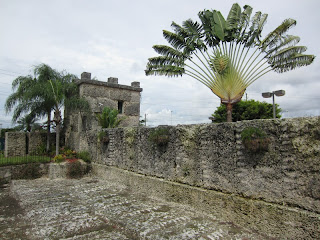






















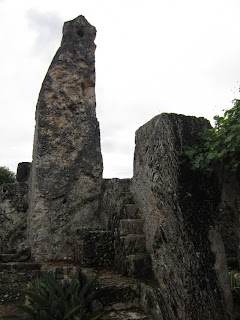




























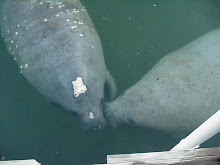













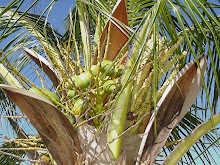
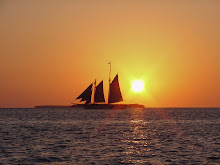




No comments:
Post a Comment